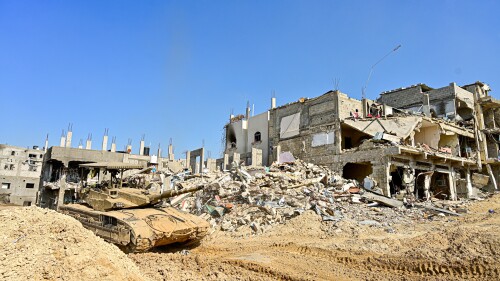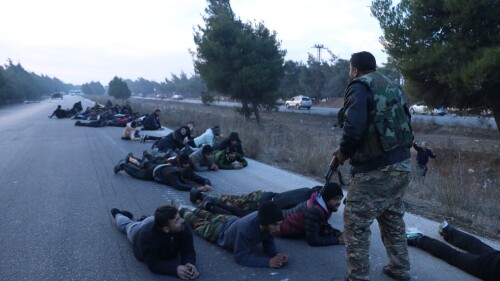In recent years, even as the constant threat of terrorism from Hamas and Hezbollah loomed, Israelis would note the political conflagrations burning up the region all around them and would contrast these with the relative tranquility and normality in their own immediate neighborhood.
These observations were made nervously, not with arrogance. Behind them was the assumption that it couldn’t last. Sooner or later, the wave of political fury sweeping the region would erupt in Israel’s immediate vicinity too.
Now it has happened. The local version of the militant Islamist political orientation which is driving the instability in Syria, Iraq, Lebanon and Egypt has now once more awakened in Israel and is spreading chaos in its wake.
Whichever particular wing or structure or iteration of the Hamas movement precisely was responsible for the recent kidnapping and murder of Naftali Frenkel, Gilad Shayer and Eyal Yifrach, there is no serious doubt remaining as to the movement’s responsibility for this atrocity.
It was this act which proved the trigger for all that has followed: the rounding up of Hamas suspects as Israel scoured the West Bank in search of the boys; a rain of missiles and rockets from the Hamas sovereign enclave in Gaza, and now, the real possibility of a renewed IDF ground operation into Gaza.
There is a tendency to see the Israeli-Palestinian arena as somehow set apart from the rest of the Mid-East neighborhood. But this is an illusion.
Firstly, in the most tangible way, the most potent elements of the Hamas assault on Israeli cities of recent days is made possible only by the movement’s link with Iran.
The M-302 missile which was fired on Hadera on Tuesday is a product of Syria, and was almost certainly supplied to Hamas by Iran. Similar materiel was discovered by the IDF on the Klos-C arms ship, apprehended by the IDF on its way from Iran to Sudan in March.
Similarly, the Islamic Jihad movement, which has been rapidly gaining strength at Hamas’s expense in Gaza in recent months, is a full proxy of Iran.
But in a deeper sense, both Hamas and Islamic Jihad are local manifestations of the particular, pathological Islamist political-religious-paramilitary style and ideology which has challenged order and made life a misery all across the region in recent decades, and with added strength in the wake of the so-called Arab Spring of 2011.
Take a look around the neighborhood. In Syria, Iraq and Lebanon, rival, equally implacable versions of political Islam are at each others’ throats. In Syria, upwards of 160,000 people have died over the course of the last four years. In Lebanon, a Shia Islamist terror group, Hizballah, enjoys unrivalled dominance. In Iraq, a Sunni Islamist killing machine has conquered the west of the country and is poised to assault Baghdad.
So why then have Israel and its environs nevertheless managed to avoid the general collapse of these other countries? The reason is deterrence.
There is a single, dominant military element west of the Jordan River. This element is the Israel Defense Forces.
But deterrence, alas, is a perishable substance, which must be periodically replenished. Hamas, facing difficult economic straits, with its tunnels sealed by Sisi’s armed forces, with newer and yet more radical Islamist elements inspired by ISIS emerging from within, evidently decided that it was time for another round.
As of now, Israel is engaging in a far reaching operation designed to hit at Hamas’ capabilities. But more profoundly, in the simple and brutal logic of the neighborhood, Israel is trying to remind Hamas of the cost of tangling with the Jewish state.
The objective of this is not to re-conquer Gaza, nor to impact on local politics, still less to impose suffering on the Palestinians for its own sake.
When one’s neighbors are Hamas and Islamic Jihad, the modest objective of quiet can only be bought at the cost of periodic military actions intended to remind the enemy of the cost of aggression and thus reinforce deterrence.
Because of the strength of Israeli arms, the conflict between Israel and the PA territories don’t resemble those roiling Iraq or Syria. The relative balance of forces, however, is a lesson which those who wish to turn the country into something resembling those hell-holes must periodically re-learn - through bitter experience.
Spyer, a senior research fellow at Israel’s Global Research in International Affairs Center, is author of “The Transforming Fire: The Rise of the Israel-Islamist Conflict.”








